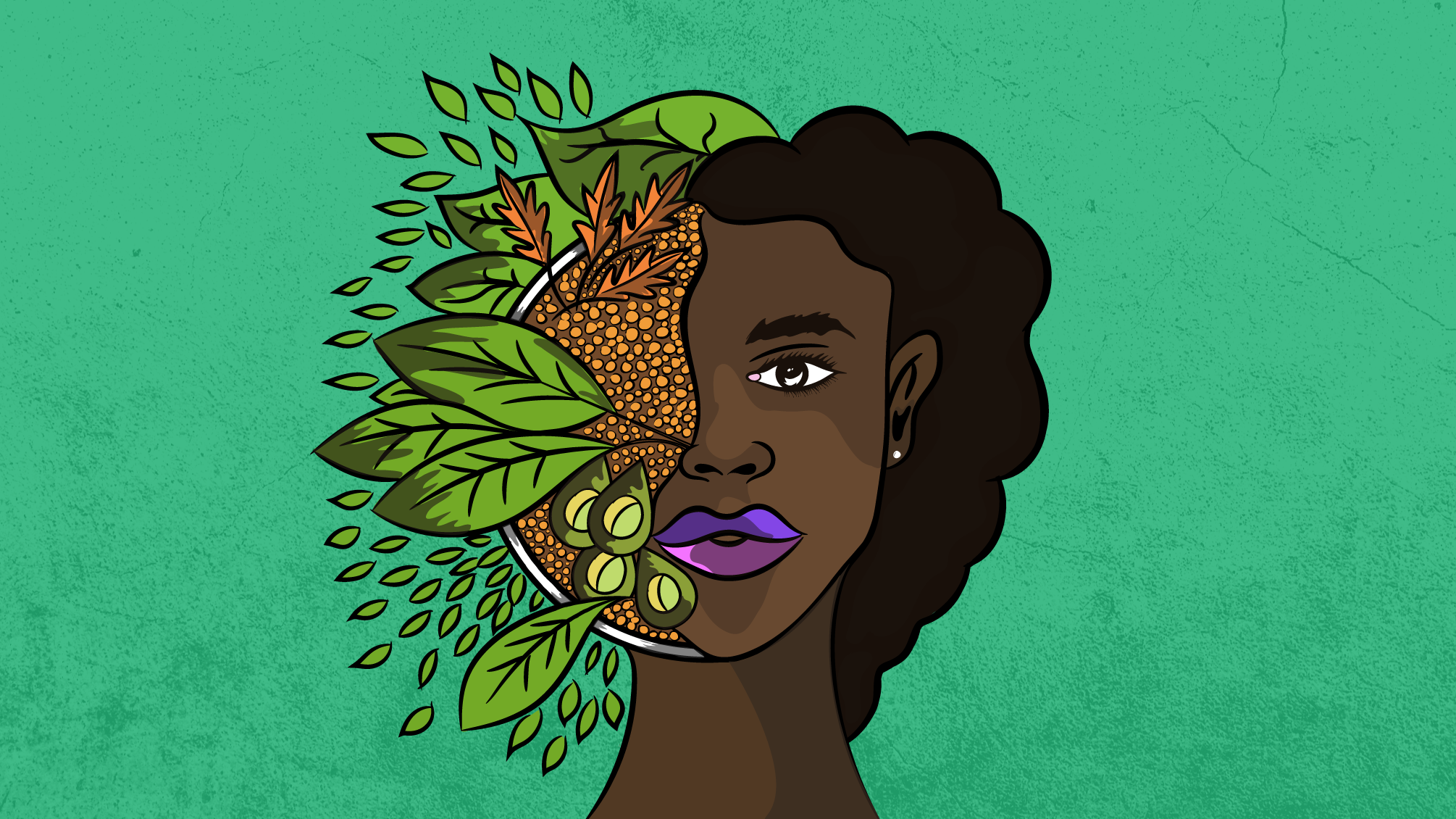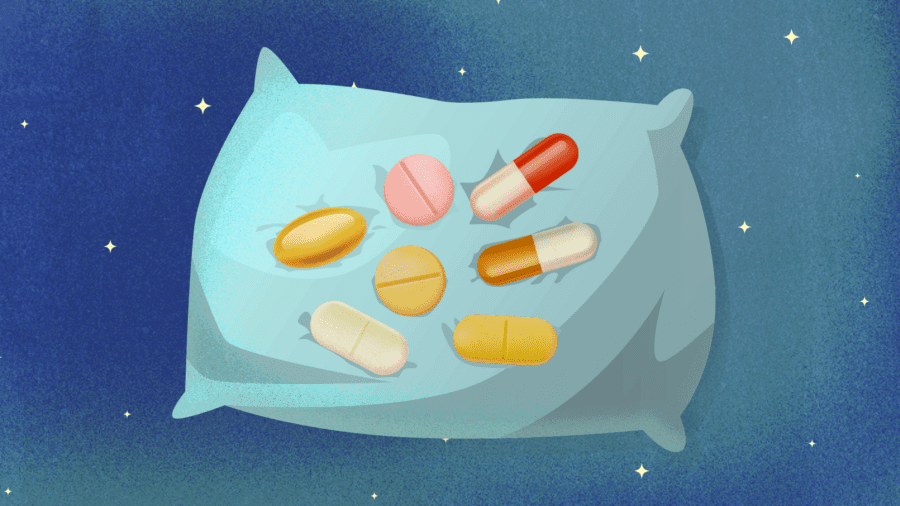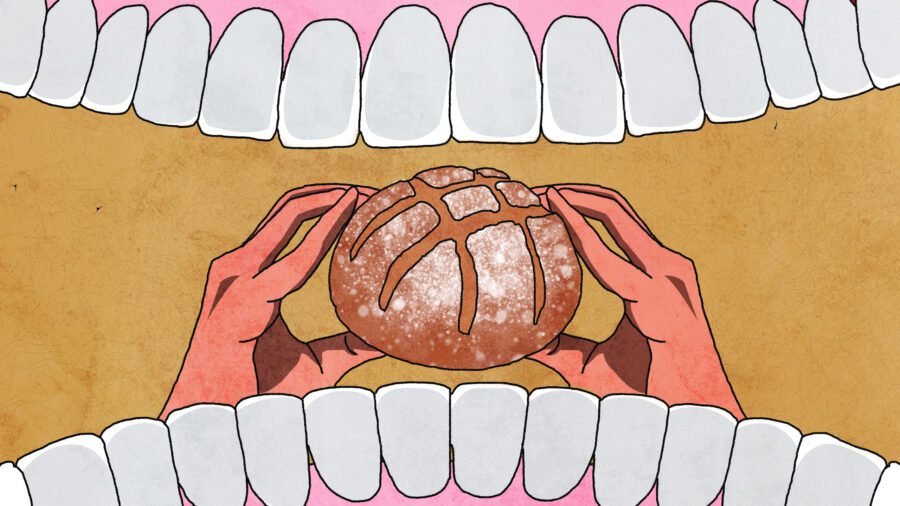
How to Age in Reverse by Eating These Plant-Based Meals
There you are, cruising into your later adult years and things are going great despite woeful news headlines bombarding you every day.
Every day stresses rear their heads, but you’ve got a good handle on your life and stress management.
Then, you see it when you look in the mirror: those wrinkles you keep bragging to your friends that you definitely don’t have. That’s right, no matter how good of a handle you have on your life, or how happy and satisfied you are with the way things have panned out, you are in fact aging.
Time continues to move forward and your body is going to show signs of aging. Maybe you already adhere to a healthy routine of daily exercise and a skin care regimen — you’re several steps ahead of many people if you do!
However, aging gracefully actually has less to do with what you put on your body than what you put in it.
We can’t literally go back in time to get our skin looking like it was in our twenties, but we can take control of what we put in our bodies. There are a large amount of virtually effortless ways to turn back the clock and age in reverse, and many of these techniques are simply rethinking what you put in your body, and what you don’t.
That’s why we put together this article detailing some of the best plant-based foods and lifestyle changes to help you age backward.
Defining a Plant-Based Diet
Does eating plant-based mean adhering to a vegan diet? Or is it a vegetarian diet that sometimes includes chicken or fish?
It’s important to know what a plant-based diet is so you can start your “Benjamin Button” process the right way. But as it turns out, there is no real definition for what a plant-based diet entails. Rather, it tends to mean something different for everyone.
To some, a plant-based diet means a strict, 100% vegan diet, while others incorporate eggs, dairy, and fish into their interpretation. However, the basic rules — eating more whole plant foods like whole grains, fruit, vegetables, legumes, nuts and seeds, and reducing intake of animal products — remain the same.
So you can essentially interpret it to include what works best for your lifestyle, but the biggest question still remains to be answered: What do you eat when you’re on a plant-based diet?
The Staples of a Plant-Based Diet
There are many different aspects of a plant-based diet, but these are some of the staples. Legumes (chickpeas, beans, peas, and lentils) provide plant protein and essential amino acids, while leafy greens and cruciferous vegetables provide calcium and other nutrients. Whole grains offer essential amino acids, iron, and zinc.
It’s also important to eat a variety of fruits and veggies so you don’t eat the same things every meal and every day. This will ensure you’re getting a mix of various vitamins, minerals, and phytonutrients.
One thing you may notice is that the recommended foods to fill up on are predominantly whole and minimally processed, which leads to what you should aim to eat less of on a plant-based diet: processed foods.
The trend of eating more vegetables and less meat has led food firms to start offering consumers a wider variety of plant-based goods. But you should keep in mind that a product isn’t necessarily healthy just because it’s vegan. It’s more important to pay attention to the quality of the food you’re eating.
According to a recent study, those who follow a plant-based diet and consume a diet rich in fruits, vegetables, nuts, legumes, and whole grains had a considerably lower chance of developing heart disease than people who follow a diet rich in refined grains and other highly processed foods.
A Typical Day on a Plant-Based Diet
In a recent study of over 300,000 people’s diets for the Journal of the American Medical Association, it was discovered that regardless of a person’s weight, the more strictly they adhered to a plant-based diet, the lower their chance of acquiring type 2 diabetes. According to other research, consuming plant-based proteins like tofu and beans can also increase lifespan.
To give you a general idea of what an average day on a plant-based diet looks like, the following is merely a sample menu for the first day of your plant-based diet:
Breakfast
When going plant-based, you can start your day off with a chocolate protein banana smoothie and substitute any dairy with an alternative of your choice coupled with one apple. If you want to, throw a tablespoon of almond butter into your smoothie for added richness and more healthy fats.
Lunch
As lunch rolls around, treat yourself to a plant-based, Best Buddha Bowl, with one cup of chopped raw veggies and two tablespoons of hummus to satisfy those mid-day snack cravings. We all get the urge to start snacking in between meals, but that doesn’t mean you have to satisfy those urges with highly processed sugary foods.
Dinner
Nothing sounds better on a dreary cold evening than a bowl of tasty soup for dinner, and this butternut squash soup will hit the spot in all the healthiest ways. If you just have to have a sweet treat after your evening meal, consider an alternative route like this no-bake vegan date brownie.
See, going plant-based isn’t so intimidating!
There are so many options for you as you embark on your plant-based journey, don’t lock yourself into eating foods you hate. Eat the healthy things you like and cut out all the highly processed snacks in favor of some raw veggies and hummus.
Join In 200 Million+ On The Journey to Greatness
Individual Foods to Include in Your Plant-Based Diet
Though it’s great to have pre-made recipes for meals to eat on your plant-based diet, you should experiment on your own with the foods you know you like — and there’s plenty to choose from. The following are some of the most beneficial foods to incorporate into your diet and, bonus — they’re all delicious!
Sesame Seeds
Intake of sesame seeds should be increased to maintain strong bones for life. They’re crucial for maintaining the health and strength of your bones because they’re packed with calcium, iron, magnesium, phosphorus, and fiber. Additionally, they’re tasty and easy to find at the grocery store!
Nuts
Nuts are among the best foods available for preventing aging—as long as you eat them frequently. Ideally, choose a mix that includes almonds, cashews, pecans, and pistachios because they’re high in protein, fiber that lowers cholesterol, and vital vitamins like phytosterols. This will ensure that you take full advantage of all this popular anti-aging snack has to offer.
Dark Chocolate
The regular use of dark chocolate offers various health benefits for your body, notably in the area of anti-aging, according to a study published in Frontiers in Immunology. The polyphenols in cocoa and dark chocolate, which are plant-based substances, have the ability to “turn on” specific signaling pathways that have antioxidant and anti-inflammatory effects that benefit both your body and skin.
Additionally, it has been demonstrated that cocoa polyphenols cause the generation of nitric oxide, which is known to protect the heart and advance overall heart health. Choose a dark chocolate bar with a higher cocoa content than those with a lower percentage because they have less sugar than other types.
Blueberries
According to a study published in the journal, Molecular Nutrition & Food Research, blueberries offer the most antioxidants per calorie out of all the berry varieties, yet all berries are rich in antioxidants. The study found that blueberries contain a range of phytochemicals that can lessen “the severity of some vascular disorders, including atherosclerosis, ischemic stroke, and neurodegenerative diseases of aging” as well as the development of some cancers.
Blueberries can thereby minimize the severity of disease or significantly reduce the risk of forming cancerous cells, but it’s important to note that they won’t necessarily prevent cancer or strokes from happening altogether.
Pineapple
According to a study in the journal Evidence-Based Complementary and Alternative Medicine, routinely eating fresh pineapple will effectively protect your skin (and, well, your entire body) from aging. In fact, pineapple is among the best anti-aging foods available thanks to its abundance of essential nutrients including fiber, magnesium, vitamin B, testosterone, vitamin C, and phosphorus, which benefit the heart, brain, immune system, colon, lungs, and bones.
Olives
According to the book The DNA Restart by Dr. Sharon Moalem, a scientist who specializes in genetics and aging, olives are a rich source of polyphenols and phytonutrients that actually help protect your DNA and offer you more energy. However, be aware that the healthy elements are only present in fresh olives because most of the nutritional value is actually removed during the pitting process from the canned kind.
Mushrooms
While all types of mushrooms contain vital elements, shiitake mushrooms are especially rich in copper, which may help slow down or partially reverse the graying of your hair, according to a paper in the journal Development. In fact, the study made note of how a copper shortage might affect the health of your hair follicles despite being a reasonably typical vitamin shortfall.
Therefore, eat shiitake mushrooms frequently as a snack to prevent the onset of gray hairs, as just one cup contains more than the daily necessary amount of copper.
Edamame
Edamame is the answer to all of your skincare prayers if you’ve ever wished you could travel back in time to when your skin was softer and less prone to wrinkles. Eating unprocessed soy products like edamame regularly may help reduce the appearance of small lines and wrinkles on your skin, according to a study that was published in the Journal of Nutritional Science and Vitaminology.
However, according to the authors of the study, you must follow this diet for at least three months to notice significant results, so this is no quick trick to age backwards!
Cold-Water Fish
The skin-cell membranes that once effectively contained moisture in your skin begin to weaken as you get older. Cold-water fish like sardines, salmon, and mackerel are useful in this situation.
Eating more of these fish—which are rich in omega-3 fatty acids—strengthens these deteriorating membranes, which in turn lessens inflammation and redness of the skin.
Lean Beef
We know this is an article about plant-based eating and that red meat is generally a no-go in a plant-based diet, but eating just a few portions of lean beef each week can work wonders for your fight against aging. A diet high in protein can help to retain the collagen that keeps your skin looking young and healthy, and beef is a great source of protein.
Lifestyle Changes
Of course, not all of life’s problems can be solved by eating a healthy, plant-based diet. Though there is great value in this diet, it’s important to note that to truly age in reverse, you must make a few lifestyle changes as well.
The following are some simple, low-effort ways in which you can slow your body’s aging process.
Practice Mindfulness
You may already be aware of the mental benefits of practicing mindfulness, but did you know it can actually reverse the effects of aging?
Researchers at the University of California, Davis discovered those who practiced mindfulness for six hours each day for three months had higher telomerase activity, which enhances chromosomal health and decreases brain aging. Now you have even more of a reason to take time out of your day to practice mindfulness!
Lose Weight
This one is a little easier said than done, but it’s still important to remember. Losing weight has many advantages, including making you look better and feel more confident, but it can also have significant effects on your brain.
There is no better time than the present to start taking steps to reach your desired weight because researchers have discovered that being overweight or obese can have a negative impact on brain volume, perhaps speeding up the rate of cognitive decline in later years.
Go for a Daily Walk
Exercise has the ability to reverse the hourglass, and you don’t even need to lift your own weight or put in hours of intense cardio to reap its benefits. Going for a walk every day is a great way to boost your heart health and burn calories.
According to a study, people who exercised the most significantly slowed down the aging of their cells by an astounding nine years.
Be a Plant-Eating Time Traveler
It’s no secret that aging isn’t something anyone looks forward to. In addition to seeing new wrinkles in the mirror and hearing joints crack when you get out of bed, aging also causes our minds to become less sharp than they once were.
The good news is that there are a vast amount of things you can do to work against this natural part of life. Unfortunately, no one can live forever, but you can look younger and healthier and feel better than ever by eating a plant-based diet and treating your body and mind well!
Greatness Authors
Greatness Authors is a collection of writers, thinkers, curiosity experts, and students of the world who are committed to bringing you the most up-to-date, impactful, and inspiring information surrounding Greatness topics.

Do You Have to Be a Morning Person to Be Successful? Here’s What Both Sides Have to Say

9 Reasons You’re Tired All the Time & How to 10x Your Energy

How to Have a Healthy Romantic Relationship Even if You Share Different Beliefs

The 7 Best Vitamins to Naturally Promote Better, Uninterrupted Sleep According to Shawn Stevenson

The Science of Forming Healthy Habits & Letting Go of Bad Ones, According to Author James Clear










